I just checked my last footage shot on DCR-PC110 (that's my baby...) in Sony Vegas and it shows black level at about 16.
I'm preparing 2 copies of this video, one for myself NTSC and another for friends in Europe -PAL.
Should I be utilizing in any phase of the project any of those 601 correction filers?
I'm using Canopus Procoder 2. I've encoded both versions PAL and NTSC and they look the same but considering that playback will be done in different environments (my stuff here - NTSC standard DVD-TV setup and PAL DVD-PAL TV in Europe) I'm wondering if this is done correctly, just making sure...
below is my video frame scope cap.
FYI, I have read this https://forum.videohelp.com/viewtopic.php?p=1480481 and associated links (by edDV) all the way to adamwitt's page.
Any thoughts?
scope.png
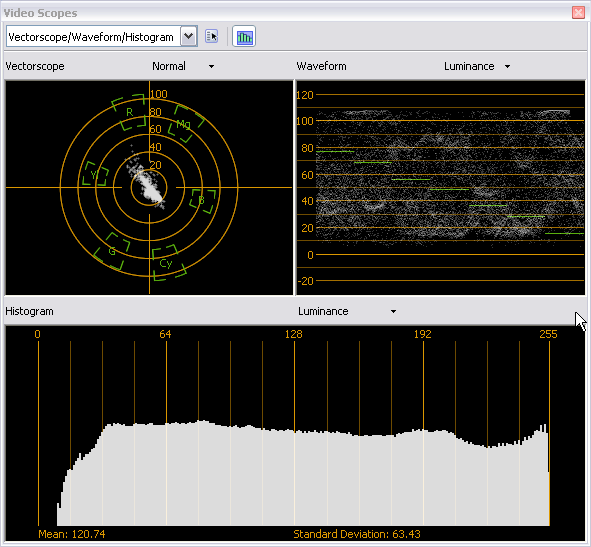
+ Reply to Thread
Results 1 to 14 of 14
-
-
The histogram shows black is close enough to 16 (for that frame) and white is hot at 255 but not greatly clipped. It should be OK for home use but a broadcaster would reject it or route it through a proc amp.
On a NTSC DVD player, that MPeg2 would play to ~7.5-108IRE.
On a PAL DVD player, it would play to ~0-108IRE.
For home use, the TV might bloom with that hot a white. It might require an 8% backoff on the "contrast" or "picture" control. That would only happen it the TV was set for 100IRE white level just below blooming as is recommended.
Older TV sets would be most susceptible to blooming since phosphors dim with time. The user will crank up the contrast (peak the high voltage supply) to get adequate white level. When such a set receives hot video, the high voltage supply has no reserve to aborb the peak. -
The idea of decreasing contrast on a DV is new to me as DV (or miniDV) is known for rather flat output. I usually boost color saturation by 10-15% (this is what I've done here, not in this histogram - it is original footage) to give it more life...
OK, so based on the above what is the proper process for DV to maintain quality and keep it as close to the original for PAL output. -
The waveform you have there is typical for SONY consumer camcorders. They run the auto gain on the hot side to make dark noise less obvious. That makes it more difficult to bring white into true Rec-601 spec. without resorting to manual iris but this isn't necessary unless you need to be in spec. for broadcasters or commercial authoring houses.Originally Posted by InXess
The main problem with the consumer Sony's is sky clipping to full white on a bright day. In those cases a neutral density filter must be used to maintain a gray scale.
The Sony prosumer camcorders like the VX2100/PD-170 have much better dark noise performance and the famous Sony "knee" to control the white end of the scale. Those cameras stay closer to the 16-235 spec when set to automatic.
So I wouldn't worry about it other than the TV contrast may need to be adjusted.
The PAL playback should look similar to what you see in NTSC. Both players will peak the analog output at 108 IRE. -
This was an image shot inside against some bright fixtures in a rather uniformly but a bit under-lit room, clipping is obvious as light bulbs are overexposed.
I checked the video and blacks start at 16 or just below (like above) with whites going all the way to 255 although with much less gain then here (curved down on the histogram).
This sounds too simple (in terms of encoding).
What you're saying is that PAL encoding does not conform DV video to 0-255 so blacks will be blacker, whites whiter and overall contrast be increased to the viewer...(?)
On the other hand NTSC will be clipping whites only... If so shouldn't encoders take this into account or users be adjusting (shrinking or expanding color space or white correction).
Aside from film look issues is this how you process your miniDV, straight up (or almost) ? -
No not exactly. DV and DVD have the same digital levels 16=black, 235= nominal white with 236-255 reserved for overshoots similar the red zone on an audio VU meter. The overshoot range is there to handle things like spotlights, reflections, windows in the background, etc. but not sustained bright light. The digital 16-235 range is the same for PAL, NTSC, ATSC digital television, MPeg 4 and any other ITU Rec 601 based digital video.Originally Posted by InXess
For analog NTSC digital 16 black maps to 7.5 IRE, 235 maps to 100 IRE and 255 maps to 108 IRE. This is done in a NTSC DVD player output stage.
PAL DVD players map digital 16 black to analog 0 IRE, digital 235 to 100 IRE and digtal 255 to 108 IRE.
The two TV sets would look identical side by side. PAL just wants analog black at zero IRE.
TV sets are adjusted so everything coming through below black (equiv. digital 16) will be invisible to the user. The 0-16 area is there to handle negative overshoots without clipping. Note discussion of "pluge" in this reference http://www.videouniversity.com/tvbars2.htm
NTSC analog black

PAL analog black
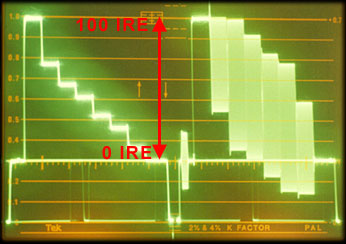
-
So DV encoding material should be left alone no mods (as is) if it comes from a consumer level camcorder?
This is where I'm at, both look the same PAL and NTSC encoded straight-up with slight color saturation correction, was wondering how PAL DVD/TV combo would reflect on quality... -
Lets try it from this angle. You have two choices.
1. Make a perfect spec DVD that would be accepted by a TV station.
This would need to conform to strict 16-235 levels (except overshoots) so that your video could be played over TV without noticable white level shifts for the viewer or worse, making the home viewers TV bloom when they go your video.
To make your video conform to spec, you would need to lower white level about 8%.
2. Accept that the video will play "hot" and will require some TV sets to be adjusted for contrast. Sony decided for this option by making their consumer camcorders output over bright video.
As for the PAL/NTSC issue, it is the job of the DVD player to convert standard digital levels to local analog level requirements.
A NTSC player will convert 16-235 to 7.5-100 IRE. A PAL player will convert 16-235 to 0-100IRE. A PAL player playing a NTSC DVD will probably still play 16-235 to 0-100IRE because that is what a PAL TV expects. This is not your issue as DVD author. Your job is to match the common 16-235 DVD standard.Recommends: Kiva.org - Loans that change lives.
http://www.kiva.org/about -
How in practical steps (leave theory aside for now) would you address that? Since there's nothing below 16 applying 601 filter would affect 235-255 range only and trim the spectrum to 16-235 range. would it not? Is there any point in doing that? How else can you attack the over-bright whites beside contrast?Originally Posted by edDV
I wonder is Sony the only consumer miniDV overshooting 235? Canons, JVCs etc...(?)Originally Posted by edDV
Since my question was also how do you process miniDV's I assume that you do not apply any special treatment to amateur level miniDV, right? I was trying to find out what is the ideal process here to achieve best, safest result. Obviously I'm not as familiar with these issues as yourself so don't freak out just yet. Even pros in the forum threads you linked to are not 100% clear on that issue. -
here are scope values for the same frame, both encoded with the same settings
PAL still looks OK but is slightly lacking black tones. Would this be normal and acceptable for system conversion? I imported both VOB's from DVD files.
PAL
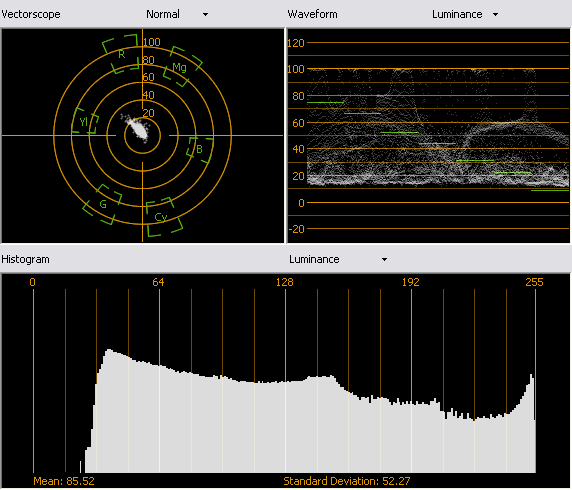
NTSC
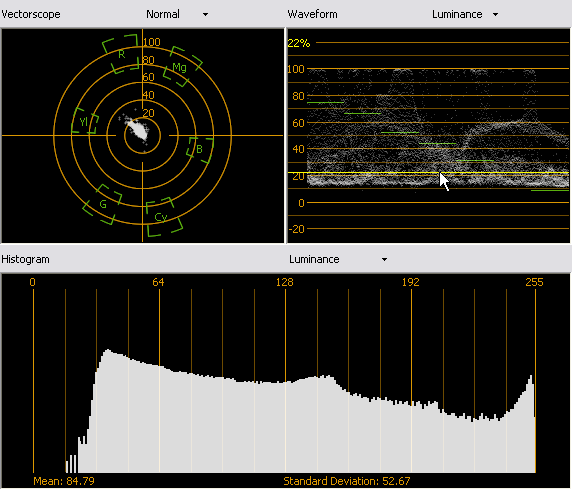
ORIGINAL (DV)

-
Good that you have Vegas. Other levels filters could be usedOriginally Posted by InXess
Here is a Sony Digital8 DV format camcorder. The waveform looks very close to yours. The white chairs are clipping at digital 255.
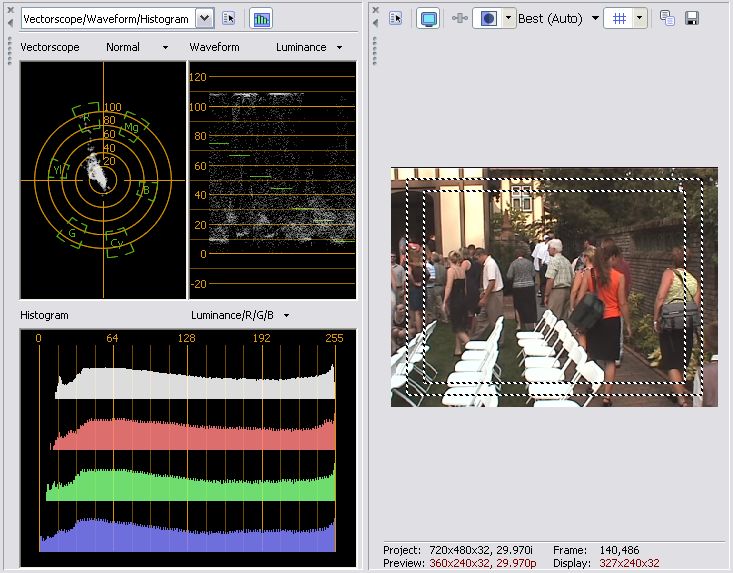
Here is the Sony levels filter with output white pulled back 7.5% to 92.5. Notice the chairs.
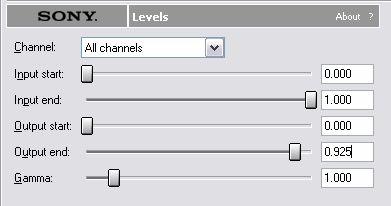
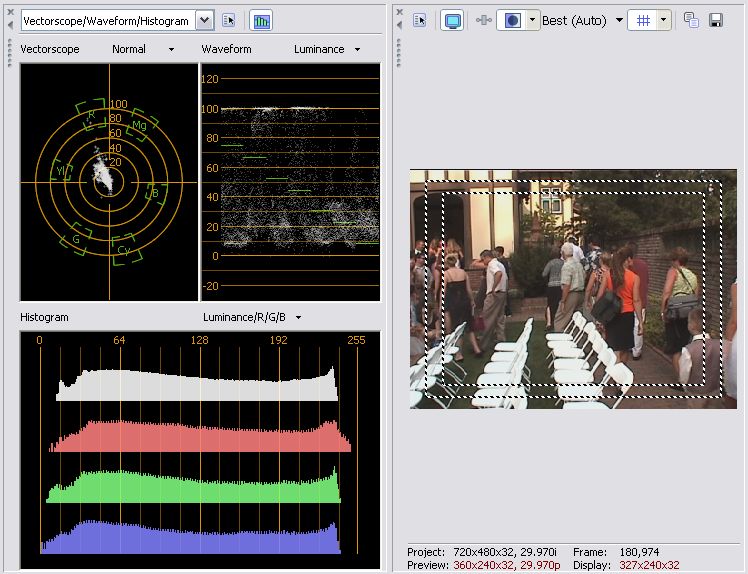
Alternate filters could do what is known as a soft clamp. That would compress down the upper luma range. That could be used on spotlights or bright windows without affecting midtones.
Here is a typical broadcast waveform
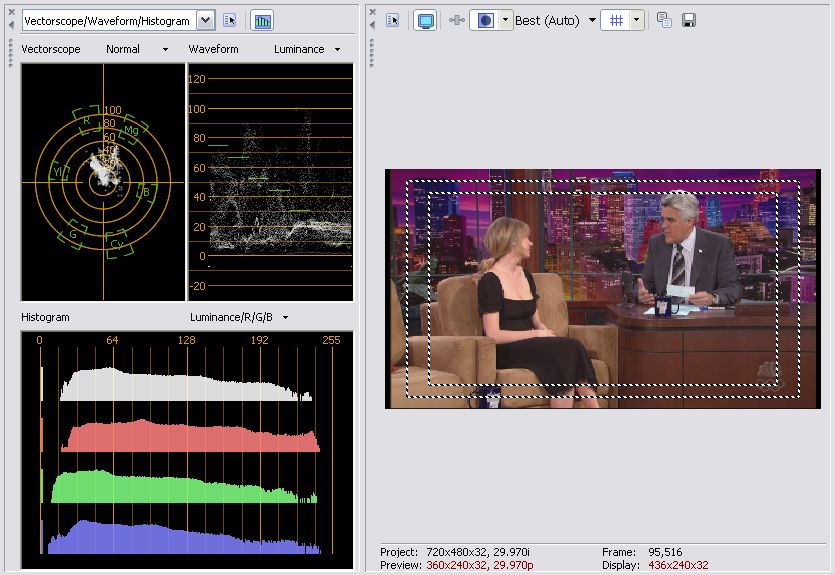
This is off a DVD showing lights in the shot. Note that luminance goes above 100% on the waveform monitor for those lights only.
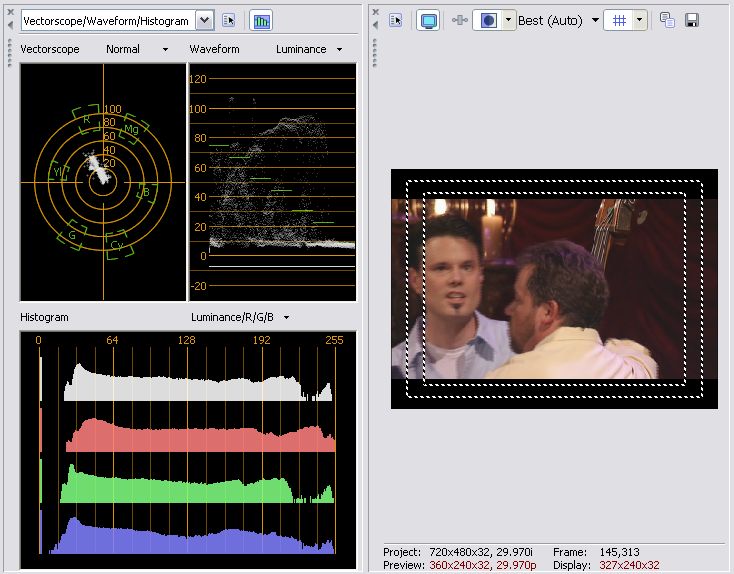
-
A given frame may not have any black. Like an audio recording you need to scan levels over the entire program to find peak whites and true blacks. You need to eyeball the picture for fine adjustments.Originally Posted by InXess
I decided to look at some DVD's for levels. I'll use the Sony HDV demo DVD because it was produced with obvious care and mega budgets. There are very few cases where luminance exceeds 100%. Here is a typical high contrast shot with lots of sky.
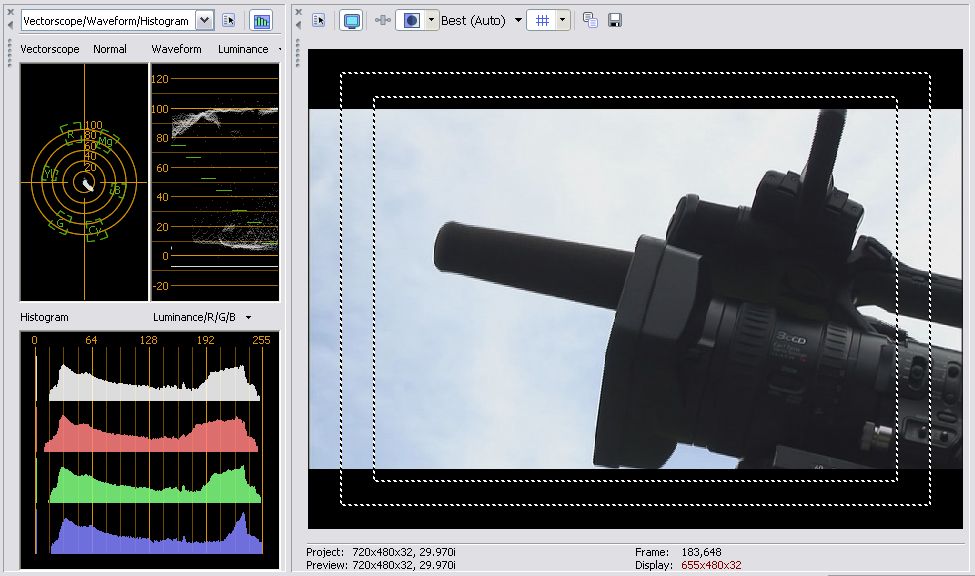
Interesting that the waveform monitor shows luma at 100 but the histogram shows video up to digital 255. I can't explain that at the moment but I've found the waveform monitor to be highly accurate.
Here's another extreme contrast example off the Sony VOB.
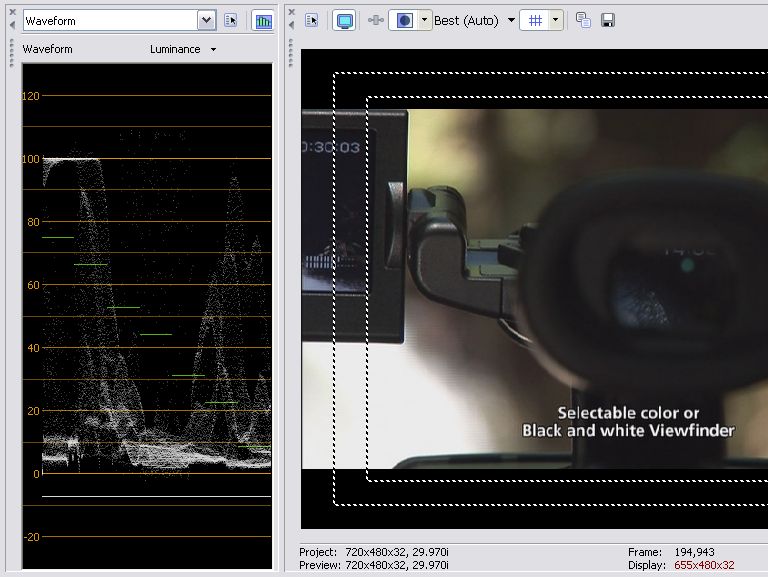
This one shows wide contrast but no true black in this particular frame.
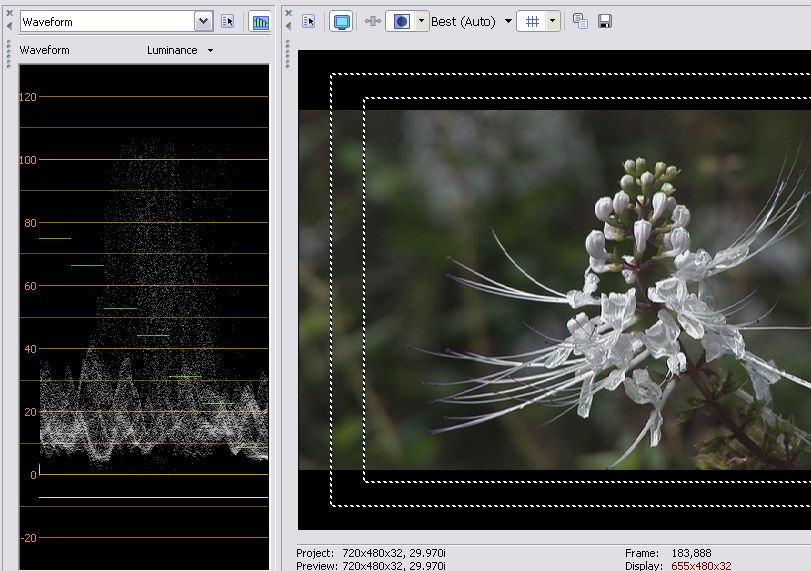
-
Thanks, I'll need to read and experiment bit more. For the fun of it I applied 601 shrink color space filter but it seems to be affecting the whole spectrum not only low and bottom range. Result was duller video (muted colors) with 33-235 range (clipped from both ends). Your Sony Tool seems to be doing a better job.
601 filter

...and you were right, this particular frame was not the best in terms of black (too uniform). My (sick) imagination wanted to see some...
Appreciate your time, this things (pics, charts etc.) are incredibly time consuming.
In the meantime I did finish the project and tested both PAL and NTSC (both work on my DVD) and they look great. NTSC is slightly better defined though (edges, black level, transparency). Not perfect job Procoder but close enough. -
I'm not sure what the "601 filter" is for. Use the levels filter.
Final pictures to drive home the 16-235 range for commercial DVD.
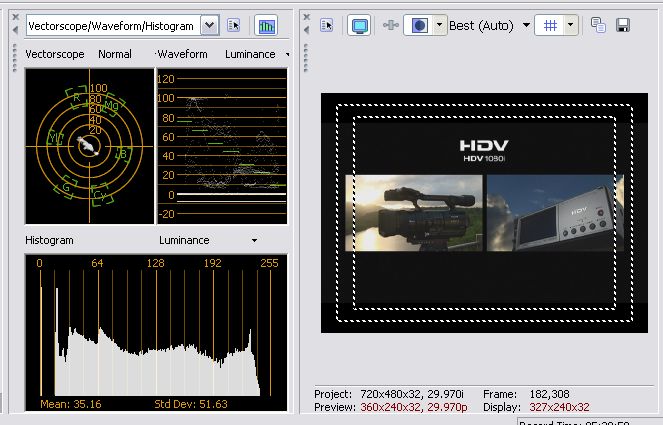
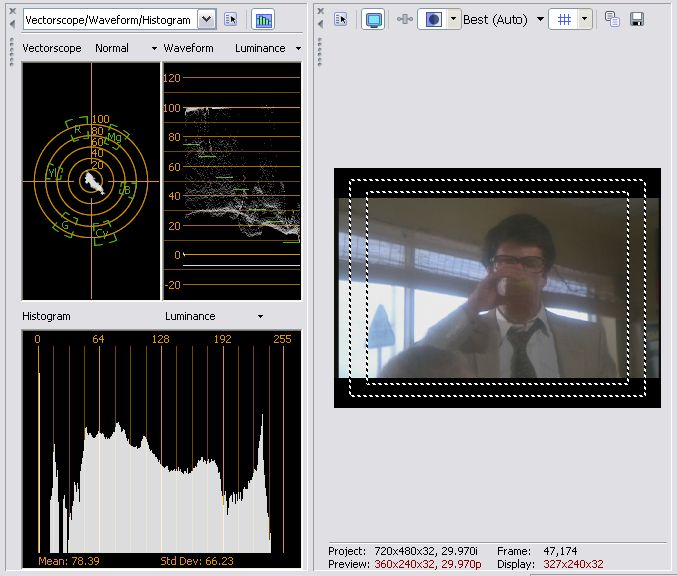
Similar Threads
-
black scenes flicker to grey/black - Sony LCD TV
By spiritgumm in forum DVB / IPTVReplies: 7Last Post: 27th Apr 2010, 09:51 -
AVI with many black lines (may be black fields)
By jarhead104 in forum Newbie / General discussionsReplies: 5Last Post: 17th Sep 2009, 07:36 -
HELP ME! Footage was Black in Render and then Turned Black in Timeline!
By GLadius of Sparta in forum EditingReplies: 4Last Post: 16th Aug 2009, 21:03 -
Looking for new minidv camcorder. Panasonic miniDV or other?
By latin trident in forum Newbie / General discussionsReplies: 7Last Post: 22nd Oct 2008, 16:54 -
miniDV to hard drive to miniDV while preserving time and date?
By vid83 in forum Newbie / General discussionsReplies: 1Last Post: 10th Dec 2007, 22:46




 Quote
Quote